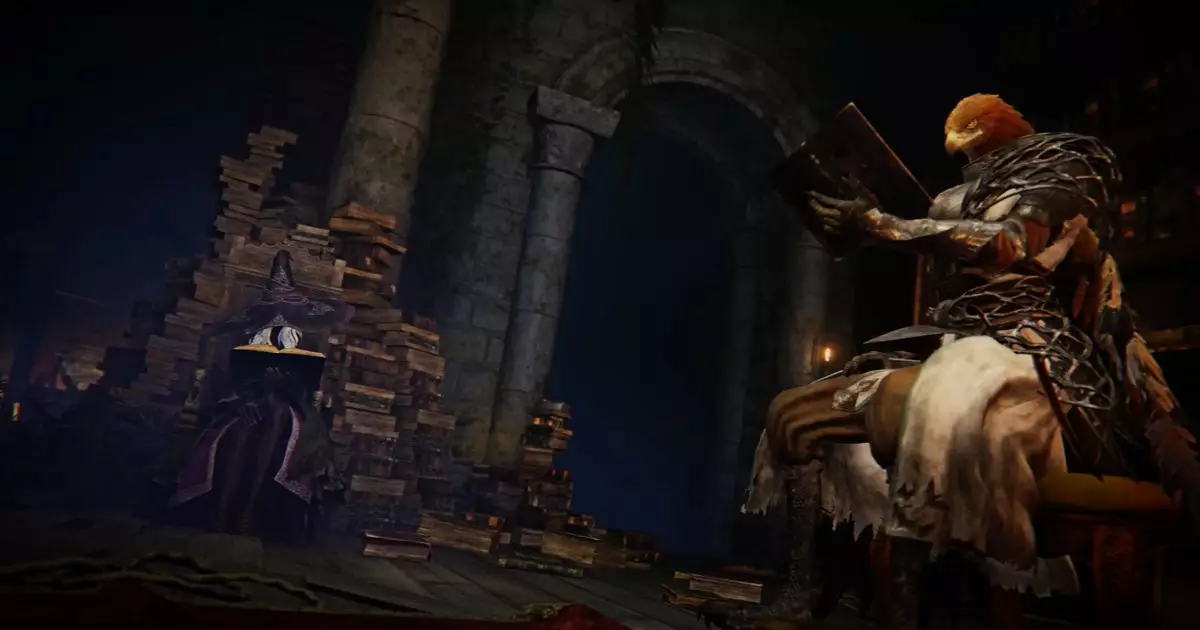In the expansive realm of Elden Ring, players are drawn not only to its gameplay and scenery but also to the undercurrents of lore and design intricacies that fuel theories and discussions within various communities. Recently, attention has focused on a particular character from the Nightreign expansion: the enigmatic Guardian. This bird-bodied entity evokes both curiosity and suspicion about the artistry woven into its design. The questions surrounding the character’s visual representation have sparked a lively debate among Elden Ring aficionados, especially those who delve into the meticulous detail of 3D model analysis. The surge of discourse has led to some compelling insights from prominent modders in the gaming community.
The Role of Modders in Discovery
This peculiar riddle was approached by Zullie The Witch, a renowned modder and dataminer who has earned a reputation for uncovering hidden elements within FromSoftware’s labyrinthine designs. Zullie’s latest analysis casts light on the Guardian’s construction, offering players a deeper understanding of the character’s design lineage. This reveals a fascinating dynamic between player engagement and the engineering behind character modeling in video games. What emerges from Zullie’s findings is not only a call for appreciation of the artistry but a conversation about the potential disconnect between aesthetics and gameplay mechanics, particularly regarding character customization.
The Nature of Nightreign’s Characters
One of the more intriguing aspects revealed by Zullie is the shift in Nightreign from customizable characters to eight fixed archetypes, showcasing an evolution in character design philosophy. Unlike its predecessor, where player-created faces contributed to the immersive experience, Nightreign seems to prioritize a more uniform, pre-defined approach to character appearance—sparking questions about the implications of this on players’ emotional connections with their avatars. Zullie notes that while traditional face data exists within the game, it is merely a mirror of previously established data from Elden Ring. This raises pivotal conversations about identity and personalization in modern gaming narratives.
The Guardian’s Birdlike Mystique
As for the Guardian, speculation about whether its bird-like exterior conceals a human face has been fervently discussed among fans. The Guardian’s role as a formidable halberd-wielding captain introduces layers of complexity, connecting themes of transformation and duality. However, Zullie’s exploration indicates that rather than conforming to a typical human visage, the design choice aligns with Elden Ring’s overarching mysterious atmosphere. The absence of a human face challenges conventional expectations, emphasizing a more profound connection to the thematic and symbolic aspects of the game. This brings the Guardian’s design into the spotlight as a reflection of the game’s expansive lore, hinting at deeper tales yet untold.
The Enigma of Wylder
While the Guardian’s features have generated considerable intrigue, perhaps the biggest mystery stems from Wylder—the only nightfarer without a properly defined face. Unlike the Guardian, Wylder maintains an aura of enigma, with Zullie uncovering nothing more than a featureless silhouette beneath his armor. Theories abound regarding this character’s true form, which leaves players pondering a fascinating inversion of character development—what stories lie behind a face that is never revealed? This enigmatic quality challenges players to engage with their imaginations, asking whether Wylder symbolizes a deeper truth about identity and existence within the gaming universe.
The Community’s Role in Unraveling Mysteries
What is particularly noteworthy is how the evidence of Zullie’s findings has ignited creative theorizing within the Elden Ring community. Fans have taken to interpreting the character lineages and identities, likening Wylder’s facelessness to that of “John Nightreign,” a meme that encapsulates the everyman archetype famed across different FromSoftware titles. This demonstrates not only the resilience of player communities in breathing life into characters but also a testament to how much deeper a game’s narrative can be appreciated when dissected by its most passionate players.
In essence, from the colorful imagination of modders to engaging community discourse, the Guardian and Wylder illustrate Elden Ring’s ability to invite scrutiny and critical thought. The realm of Nightreign serves as a canvas for players to explore not just gameplay, but the deeper meaning behind character identities and their connections to the lore of an expansive world.

